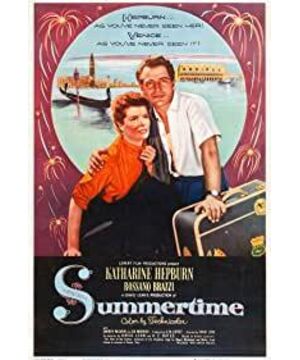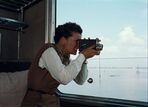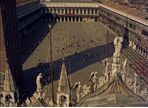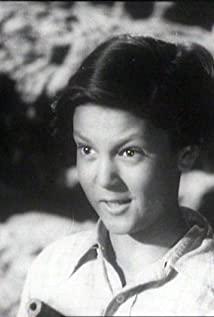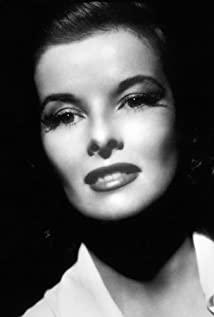Square Montage
Besame Mucho
"In chance encounters, chatting about their shared misfortunes and their respective hardships. This scene often happens in summer squares, on trains, and in the bustling cafes with music in the market. Without these, according to them, they would not be able to get rid of loneliness." --------Marguerite Duras, "Plaza"
l Brain hole about the square
Aside from the inherent shape of the city square in consciousness, try to imagine: an open square space located in the central area of the city, with complete functions, but few people patronize it during the day, and occasionally people pass by, but also tremblingly and cautiously hurried away, my It means that it is not a private garden, and there is no warning sign as a ban on field regulations, and in non-war years, there will be no ambush snipers around the square. So will you be curious to find out, or develop a kind of disenchantment? ! Just like the mystery hidden under the calm water, you will not only have the thought of throwing a small stone, but also have the urge to throw a big stone. For such an empty square, you might be able to sing aloud, or walk in and hop on a paragraph to see what draws. In fact, these thoughts are just as normal as instincts. People go to the square without a purpose, but driven by instinct, and this imaginary square will not exist unless it is late at night, and the safety is reduced due to the low usage rate. extreme conditions. However, a healthy and vibrant square space will never lack people's stay, day and night. If you have given a summer time to Italy and Venice in your lifetime, you will know everything.
l love square
Hollywood has a classic love movie that is shot around the square. Piazza San Marco in Venice, also known as the central square of Venice. The film is called "summer time", the Chinese translation is "sunny day", and there is also a literal translation as "summer time" starring Hollywood legendary actress Katharine Hepburn and Italian actor Rossano Brazzi. It was released in the 1950s, and the two leading actors have passed away for many years, but now looking back on this old movie, it still does not feel outdated, and it has become a classic like St. Mark's Square. The film is about a love story that happened in the world-famous city of Venice. The hero and heroine first met in an outdoor cafe under the sun in the famous Piazza San Marco.
Jane, an older bachelorette in an American city, saved some money, "in order to find what is missing in life" (in the film), went to Venice alone for a vacation, surrounded by lively surroundings, she was embarrassed and lonely, yearning in loneliness What... I go to St. Mark's Square to eat and sunbathe every day, just outside the colonnade at the outdoor table, sitting in the crowd, you can look at the lively square - elegant and solemn ancient buildings, lively and fragrant crowds, just like Watch an open-air theatre that takes place every day. Graceful and graceful, Jane was noticed by local antique shop owner Renato, who speaks fluent English. Facing the approach of a mature and sexy local man, Jane panicked and left the scene in the embarrassment of being found out.
Venice is not big, and the dense ancient streets and lanes are all around St. Mark's Square, and the texture is clustered. Every day Jane wandered alone, attracted by the amazing red glass wine glass in the window of the antique store on the street, went in and bought it. And this antique shop happened to belong to Renato. The owner took the initiative to bargain for her and wrapped a cup for her. After a short conversation, Jane left in a hurry. In fact, the two fell in love with each other. The next day, Jane came to the door of the store to take pictures and wandered. She fell into the water. Jane was fished out by the crowd, made an appearance, and returned to the hotel. Soon Renato came to visit and took the opportunity to express their love. Then they started dating. Renato took her around the small town of Venice, and when night fell, she was sent back to the hotel to stop.
As Jane tries to get closer to Renato, she stumbles across his married status, arguing and resisting. Italy has a special tradition: if the two parties in the marriage are not in harmony, the divorce procedure is difficult due to historical and religious reasons. But this tradition is accompanied by the fact that the actual behavior of Italians often goes beyond the rules and ethics, and pursues free choice. After all, Jane is only on vacation. Faced with Jane's confusion about the future, he said: Wouldn't it be nice to just bring a cup back at the end of the holidays? They finally embraced the passion and came together. Jane fell in love with sweetness, and then painfully chose to leave because she couldn't really get together in the future, which made the relationship come to an abrupt end: "I have to leave immediately, I'm afraid I won't be able to leave if I don't leave." During the short exotic vacation, there were mixed flavors, ups and downs, bittersweet, bittersweet, bittersweet, bittersweet, bittersweet, bittersweet, bittersweet, and boring. For Jane in the United States, the summer time in Venice eventually became a beautiful life memory, like fireworks, short and eternal.
The love of middle-aged people is mature and pragmatic, and it is not unrealistic. Knowing that there will be no results, they should also release their passion, because life is not so complete, cherishing encounters, and accepting imperfections are the greatest maturity of middle-aged people. Just like what the actor said when arguing: "You see cake and want steak, we Italians eat pizza when you're hungry", Renato is romantic and delicate, but also mature and pragmatic. The relationship between the two is not so much an affair as it is love. The former lacks true feelings, and no matter how short the love is, it is love. To taste the sweetest fruit and accept the most helpless ending, isn't this the greatest value of love?
There is a plot in the film that when night falls in Venice, the sound of the city fades away. Accompanied by the sound of the mandolin, Renato buys a white gardenia from an old woman selling flowers on the street and gives it to Jane. Accidentally fell into the water, he ran to the stone steps by the water, squatted down and stretched out his arms to catch it, the gardenia slowly slipped in front of his fingertips in the water. Fate is generally calm.
At the end of the film, it was agreed that she would be alone when she parted, but Jane was still looking forward to Renato's figure. The departing train started slowly. She leaned out the window and saw Renato holding an antique small box, the handsome and sexy middle-aged man The man was running regardless of his demeanor, waving his hand and trying to catch up and hand it to her, but almost, the train accelerated like a river, never looking back. The box fell to the ground, and inside was a fresh white gardenia.
The film was shot in the world-famous city of Venice. Whether it is the story of reunion and parting itself, or the concept of love and ethical phenomena involved, and even the context of that time and place, it still won’t feel old-fashioned when I look back on it today. . Classic stories, powerful actors and famous cities, these structures are enough to support a handed down film. If the story in the film "summer time" satisfies people's greatest fantasy about love. The Piazza San Marco, where love events take place and carry love events in the film, is an ideal model of human square space.
l The main square
1. Big Square 2. Small Square 3. Lion Square 4. St. Mark's Basilica 5. Bell Tower 6. Governor's Palace 7. Jiu Municipal Building 8. New Municipal Building 9. St. Mark's Library
In the final analysis, any element of urban space is built by people, so the subjectivity of the square is given by decision makers and designers. Sophie Wolfrum from Germany wrote a book "Square: Scale, Design, Space", starting from the materiality of the square, and made a statistical arrangement of 70 famous squares in Europe, including scale, plane form and nine Physical space indicators of large functions, etc.
These squares are the landmarks of the city - the front squares of churches and museums, originating from different functions, including the Piazza San Pietro, which hosts religious ceremonies, the Piazza San Marco, which hosts the Carnival of Venice, and the shell that hosts the Jockey Club of Siena. Square and more.
Among the nine functions of walking, running, viewing, ceremony, leisure, private space, communication, assembly, and void, Piazza San Marco occupies 7 and is the only one with the most functions; There are 4 squares in the classical period; they are large squares, second only to 4 large squares and 9 super large squares (including the Vatican St. Peter's Square, which is mainly used for religious ceremonies, etc.). It can be seen that the comprehensive function of Piazza San Marco is the best even if the factors of landscape and human flow are excluded.
Napoleon once said that Piazza San Marco is the most beautiful living room in Europe. This sentence shows its landscape value. However, it now seems that in the era of underdeveloped communication and transportation, Napoleon's perspective is still limited. The trade status of the city-state of Venice began from the Middle Ages to the end of the Renaissance. Venice was the trade center of the Mediterranean until the great voyage caused the transfer of the European trade center to the Netherlands. However, Venice is still a popular destination for tourists from all over the world. From the perspective of people, as the center of gravity of the urban architecture of Venice - Piazza San Marco is not only the most beautiful living room in Europe, but also the most beautiful living room in the world. The famous Italian architect Aldo Rossi said: If Venice's Piazza San Marco and the Doge's Palace appear together in a completely different city (the future Venice may be like this), if we find ourselves in this extraordinary city In the building, our emotions will be equally strong, and we will have the same feeling of being in the history of Venice.
I have visited Venice twice in the off-season. From the perspective of space vitality, even today, even in the cold and humid winter, Venice is lively, and the square is also very crowded. It can be seen that Piazza San Marco is the best model of human square space.
But after all, the users of Piazza San Marco are more tourists from all over the world, and it cannot be used as an example of the square space in the city block. But if you don't count the number of foreign tourists, how many locals are there in Venice? Just like our ancient cities of Wuzhen and Hongcun. They are all world.
Obviously the flow of people is a factor that affects the vitality of the square. According to Jane Jacobs, author of "Death and Life in America's Great Cities," a sign of a healthy plaza is high usage and safety. The unmanned space in the corners of the city is an important reason for the increase of urban crime rate. The utilization rate of the square space in the daily use of the city block is guaranteed by the diversity of the surrounding buildings. Because the surrounding buildings are of a single nature, the vacancy rate of the square will be high. For example, if the surrounding area is surrounded by office buildings, the users of the square are all employees of the office building, so after get off work, the square will be empty. The diversity of buildings around the square can ensure that users will stay in the square at each time period and increase the vitality of the square. It can be seen that a square space is closely related to the overall design of a community and the entire urban space.
According to the field research and observation of American public space observer William H. White, it is concluded that the number of women is generally higher than average in the most used public space. Because women choose where to sit, they are more critical than men, women are more sensitive to troubles, and women spend more time weighing possibilities. If a plaza has significantly more women than average, it might be a good plaza.
According to White's conclusion, to increase the vitality of the square, there are many material factors that attract people to stay: natural elements such as sunlight, wind, trees, and water, as well as human factors such as food sales and seating space. Facts have proved that there is plenty of sunshine, and the square space with trees and no air vents is more suitable for people to stay. Compared with the shaded side, people prefer sunlight. Even in hot climates, people will wear sunglasses, sun hats, and stay in the sun. In addition to harsh natural conditions, the mass design between buildings can also generate negative airflow. In the harsh microclimate, a bank plaza in Seattle is equipped with safety ropes, allowing people to have a grip when passing through the plaza to resist the huge airflow brought by tall buildings; the combination of trees and benches will form a pleasant space environment; and The clever design of the water body will greatly add interest and make people linger. Not only visual, but also combined with the intervention of people's hearing and touch to create a hydrophilic space, just like the musical fountain plaza in Taikoo Li, Sanlitun, Beijing, the ground fountain combined with the water curtain wall, which is most attractive to children in summer. I saw this modern design approach in the front square of an art gallery in Bristol, England, more than a decade ago. The water system of Piazza San Marco in Venice is the Grand Canal. The city and the square are built according to the water, which is natural.
The abundance of bench space provides more possibilities for people to stay. This bench refers to the space where people can sit in a broad sense, such as steps, flower bed walls, pool edges, and of course stone benches and benches. The presence of food sales is also an important point to increase the vitality of the square. This experience is not difficult to obtain from Italy, which has the most space in the square. From the cafés and restaurants under the colonnades around Piazza San Marco to the hot dog stand in Times Square in New York, there is food wherever there is a crowd.
l The square of existentialism
Aldo Rossi discusses an important change in the form of the square in his book "Architecture of the City": around the 5th century BC, the square ceased to be a market, and thus became a model almost in line with Aristotle's maxims. real square. Aristotle said: Public squares will no longer be defiled by merchandise, and artisans will be barred from entering... Markets should be designated far from squares and clearly separated from them... It was during this period that statues, temples and monuments appeared in the square.
In the final analysis, any element of urban space is used by people. The origin of the plaza space and the changes of the system also follow the changes of people's behavior. People's survival needs and living conditions are different in each historical period. From the ancient commercial market function to the modern square's running fitness function, the space form of the square has changed in the historical changes and the development of the times. In modern society, the main function of the square is to provide people with leisure, walking, gathering and communication. In fact, this is the general trend of people, and the purpose of the square space is to comply with the individual's inner drive to abandon loneliness.
Danish architect Jan Gale quoted an old Scandinavian proverb in "Communication and Space" to illustrate the intrinsic drive of human beings: people go to people. At home, he wrote, it was observed that children would rather be in adults' rooms or with other children than in places with only toys. That's right, kids are more accustomed to playing football and games on the sidewalks of lively streets than a small playground with a well-established game facility in a secluded corner of the block. This is the conclusion observed by Jane Jacobs.
This spontaneous drive of human beings also injects spiritual attributes into the design of the square space. Compared with the one-way seat design of other public spaces, such as the one-way design of the seats in the aircraft cabin and the seats in the customer waiting area of the bank hall, it is obvious that the design of the square is an extroverted open space, which is not only convenient for people to be alone, but also convenient. Meet and socialize, as usually seat clusters are backless and directional. The square space provides the possibility for individual spontaneous and social activities. Both of these activities require individuals to go to the crowd: it is safer to walk alone in the crowd; to get rid of loneliness-driven communication requires the participation of another individual, and it is even more necessary to walk into the crowd.
In Mazda Adri's book "Cities and Stress", it is described that the social density and stress of cities make people want to escape, and the sense of loneliness and isolation increases the mortality rate. Obviously, good urban space design must take this as a basis to alleviate such urban problems.
A good square should be the respite and white space of the city.
For the communication between strangers in the square, White proposed a concept called the triangle effect , which means that certain external stimuli promote the connection between people and stimulate the strangers to talk to each other. It can be understood as a medium of encounter and communication. It can be a street performer, a band, or a fun sculpture. In short, everything that can make people break the ice and enter the conversation naturally is like a proper conversation between British people. , the best medium is the weather.
The famous French female writer Marguerite Duras has a short story "Plaza", the whole content is the trivial dialogue between a pair of strange men and women who met in the square, showing the individual loneliness in the city and the living state of desire to change. The novel was adapted into a play, which is still being staged today. The France of the Duras era was exactly the France with a strong atmosphere of existential philosophy. The rough coordinates of existentialism in the history of Western philosophy can be seen as follows: The emergence of Kant's epistemology has become the division between classical philosophy and modern philosophy with ontology as the core, and Schopenhauer, one of the philosophers of the main school of thought that appeared after Kant, influenced In the development of philosophy including Nietzsche, Nietzsche influenced the existentialism of Sartre and Camus. In short, Schopenhauer said: There is nothing in life; Nietzsche said: Create meaning for nothing; So Sartre said: Free choice and active action; Camus said: Yes, to resist.
Summarizing the specific behavior of human beings with philosophical thoughts is: Plato said that there is a world of ideas on top of the real world, so the plan drawings of the square appeared before the actual square; Schopenhauer's life is nothing and absurdity and human individual sense of loneliness fit; Nietzsche advocates that human beings should create meaning for nothingness by themselves, because God is dead, and human beings should become superhumans like Sisyphus who repeatedly lifts stones up the mountain in mythology, so people create squares and come to squares; people appreciate beauty and enjoyment in squares Beauty is also in line with Schopenhauer's idea of using aesthetic behavior and will to dissolve the emptiness of life; Sartre advocates free choice and active action, Camus said to resist, resist loneliness, and resist nothingness, so people meet and communicate in the square. socialize. . . . . .
However, in the square, there is a slight difference between the encounter caused by the triangular effect and the encounter caused by the internal drive. But it's hard to say that Renato, a native of Venice, sits alone in the sunshine under the colonnade of Piazza San Marco every day, and Jane came to Venice from the United States, and sits alone in the sunshine under the colonnade of Piazza San Marco every day. Who is more Like premeditated, although Renato is more proactive, they are essentially the same, like everyone, independent individuals with free will and free choice, they can choose to act proactively.
In Piazza San Marco, which is alive all year round, people do not need a medium to meet, if they do, the medium is the square itself. Trust that good things happen in beautiful places.
(This film is copyrighted by "Banmen" MOOK)
View more about Summertime reviews


